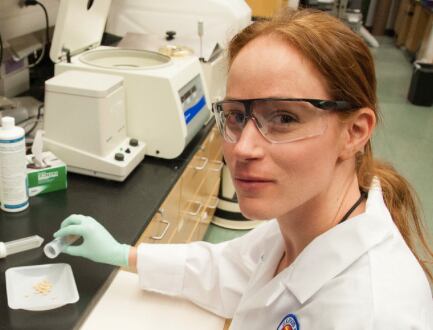Sara Handy, PhD, is an FDA research biologist who has been working on using DNA for identification for a number of years. She said the difficulty of matching the technology to the complexity of plant identification and the needs of the industry has been matched by the enormity of the task of meeting the expectations for the approach.
At one time, and still to this day among some less sophisticated companies, FTIR handheld devices were thought to offer a panacea for botanical ingredient identification. Then the promise of DNA came to the fore, driven by the attack on the integrity of products on the shelf led by former New York Attorney General Eric Schneiderman.
Early win with fish
Then came an early, significant win for the use of DNA techniques in real life product identification. Handy participated in the development of a barcoding approach for the identification of fish species, a method which was last updated in 2011.
Mislabeling of fish in retail outlets and in restaurants had become a significant problem, presenting both fraud and sustainability concerns. The method Handy and her colleagues developed to tackle this problem delivers on the promise of DNA technology, a hard and fast, yes or no answer.
“It turns out the method we use for fish works incredibly well,” Handy told NutraIngredients-USA.
One area on the fish genome was identified that could be used with a high degree of certainty to tell one species from another. This considerable success perhaps set the table for unreasonable expectations for the use of DNA technology for botanical ingredient identification.
Plants present more complex problems

Plants, while considered a ‘lower’ form of life than animals, turned out to present a much tougher challenge. To start with, the number of questions one might ask are more complex. In fish, it’s “Is this grouper, or something else?” While in a botanical identification scenario, the questions might span a range such as, “Is this the plant I’m looking for, or a closely related species?” “Can I use the method for the DNA identification I developed for plant A for plant B?” and, “If the DNA matches what I expect, how can I know I’ve got the right part of that plant?”
“In 2009, we decided to try the method we developed for fish and apply it to pine nuts. We found that finding the right marker to use (the portion of the plant’s genome that would prove to be definitive) was not nearly as easy as it was for fish,” Hardy said.
“The biggest issue is that plants evolved much more slowly,” she said. As plants moved from single cells floating in the oceans to complex organisms filling many terrestrial niches, the threads of DNA inheritance combined and recombined, creating a complex symphony from which picking a definitive melody is a challenge. Animal DNA sequences are Bach suites for solo instruments by comparison.
“There is not as much variation in the gene sequences as in plants,” Handy said.
State of art steadily advancing
But persistent, careful work has moved the state of the art steadily forward. Handy gave an update on her work during a session last month at the International Conference on the Science of Botanicals held at the University of Mississippi in Oxford. A key learning in that process has been that there will be no clean answer for plants as there was for fish.
“You have to ask yourself if the marker you are using is diagnostic for the question you want to answer. You are looking for a unique region on the DNA strand that will answer that question. You could be wanting to ask a question such as, is this echinacea? Or, is this product Echinacea purpurea? Or more broadly, what’s in this product? You could ask all of these questions, and might need different markers for all of them,” Handy said.
“With fish, we could use a single test and get answers for all of those questions. In plants, we have to get a lot more creative,” she said.
DNA library from validated specimens
Handy said the recent work at FDA has focused on building up a library of DNA information from validated botanical specimens. Other recent work has looked at the question of how much DNA might be present in extracts. This was at first thought to be an unequivocal no, but it now appears there can be some usable portions of DNA still present, depending on the raw material and the extraction method. That could allow the extension of the technology into the finished product testing field.
“My hope is that we can have some validated methods for that. You need to have usable DNA present and that’s the key,” Handy said.
“The biggest thing I’d like to convey is that there are many types of DNA analysis. Some of them are absolutely not appropriate for finished products analysis and some of them could be. So we’ll have to stay tuned,” she said.




